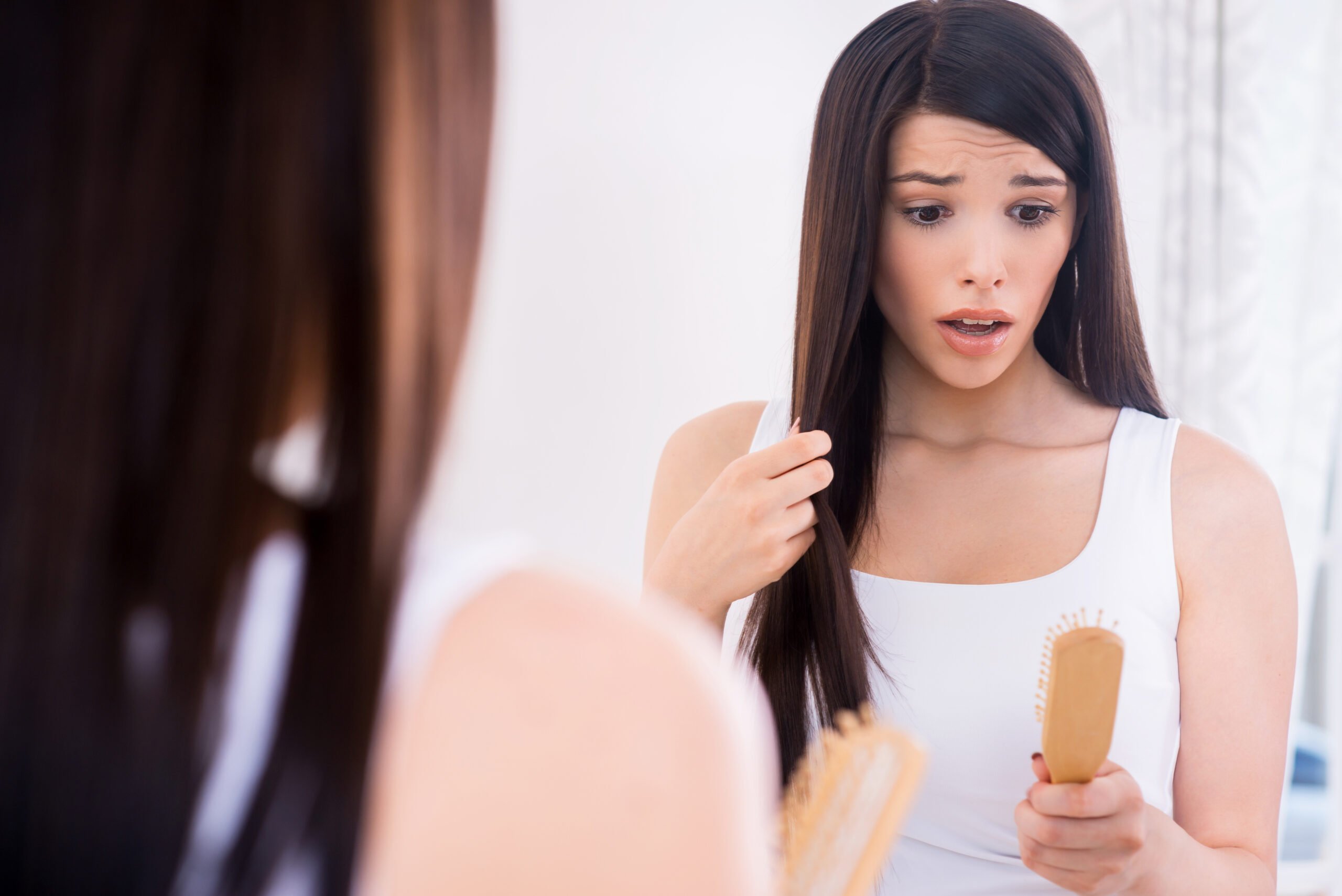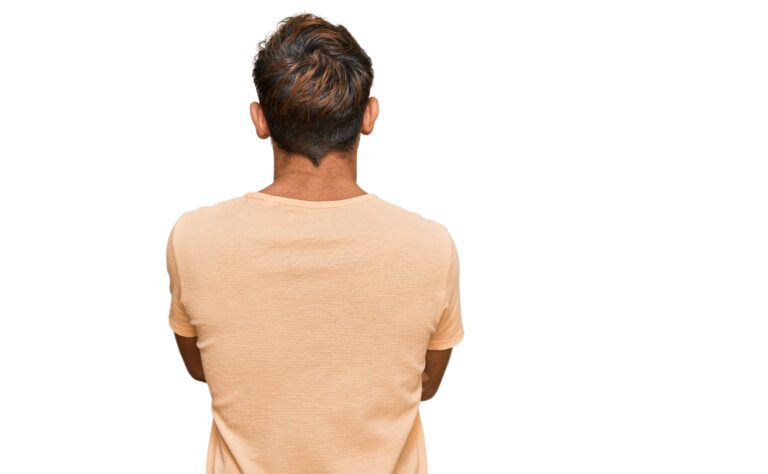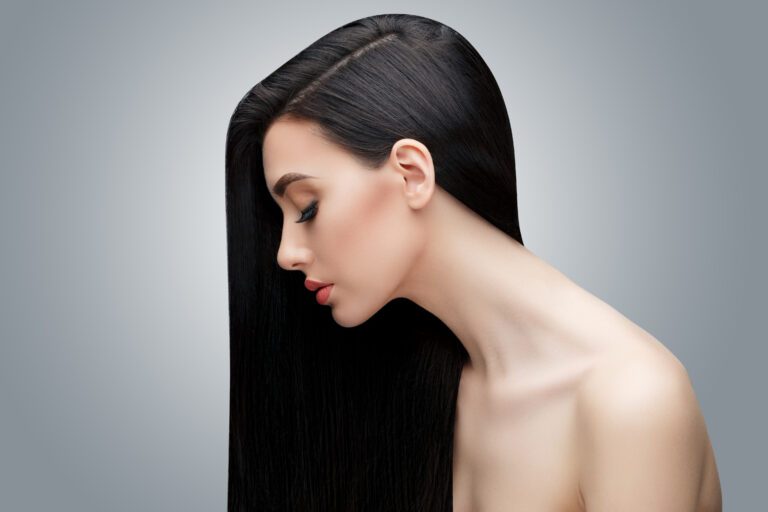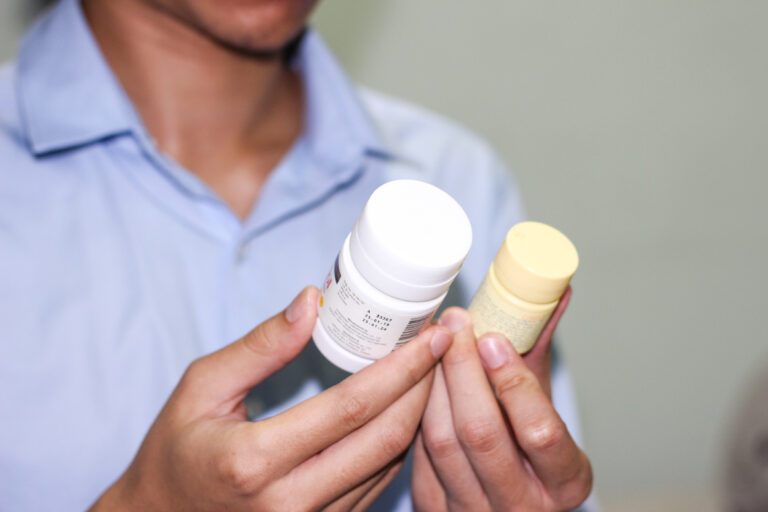Dutasterida para mulheres: É seguro e eficaz?
A queda de cabelo é um problema preocupante que afecta muitas mulheres. Não se restringe a uma área geográfica ou a um grupo etário específico, e quase 40% das mulheres com cerca de 50 anos de idade sofrem desta aflição. Mas é claro que existem diferenças na gravidade e na propagação da queda de cabelo de padrão feminino nos diferentes grupos.
Recentemente, temos visto um punhado de produtos off-label que afirmam tratar esse problema. A dutasterida é um desses medicamentos promissores. Foi originalmente utilizado no tratamento da hiperplasia benigna da próstata, que claramente não está relacionada com as mulheres.
A utilização da Dutasterida nas mulheres ainda está a ser estudada. Vale a pena notar que ainda não foi autorizado como um medicamento para a calvície nos homens. O que estamos a fazer aqui é explorar as últimas descobertas sobre este medicamento, especialmente a sua eficácia para parar a queda de cabelo nas mulheres, e se tem ou não efeitos secundários graves.
O que é Dutasteride?
A dutasterida é um Inibidor da 5𝞪 redutase (5ARI), que impede a conversão da testosterona em dihidrotestosterona (DHT). Mas porque é que os cientistas querem parar essa conversão?
Presume-se que a DHT é a principal causa da queda de cabelo de padrão masculino. Quando esta substância atinge um folículo piloso, faz com que este encolha e se torne incapaz de produzir cabelo. Esta condição é conhecida como alopecia androgénica.
Assim, é compreensível que os investigadores se tenham empenhado em tentar travar a conversão da testosterona na substância prejudicial para o cabelo, a DHT. A finasterida está entre os primeiros produtos que tentaram combater a queda de cabelo utilizando este método, e mostrou resultados encorajadores.
Como é que o Dutasteride funciona?
A dutasterida impede a conversão da testosterona em cerca de 90%, o que constitui um grau de inibição notável. Na ausência de DHT, a queda de cabelo é visivelmente reduzida e há mais oportunidades para o crescimento do cabelo.
A Dutasterida é bastante semelhante à Finasterida em muitos aspectos, mas excede-a numa caraterística particular. A dutasterida pode bloquear dois tipos da 5𝞪 redutase; que são as isoformas I e II. por outro lado, a finasterida bloqueia apenas a isoforma II.
Os padrões de queda de cabelo feminino e masculino são semelhantes?
O modo de ação descrito acima é o modo como o medicamento funciona nos homens. As mulheres têm uma composição hormonal diferente e a queda de cabelo não está ligada a um único fator.
Para além da alopecia androgénica, outros factores de queda de cabelo nas mulheres incluem
- Stress físico ou emocional
- Perda de peso significativa
- Gravidez e parto
- Tomar certos medicamentos
- Deficiências nutricionais
- Desequilíbrios hormonais
- Síndrome dos ovários poliquísticos (SOP)
- Perturbações da tiróide
- Doenças auto-imunes
- A receber quimioterapia
- Práticas agressivas de penteados
- Envelhecimento
Tanto os homens como as mulheres têm testosterona a fluir nos seus corpos, mas naturalmente, as quantidades diferem drasticamente entre os sexos. A 5𝞪 redutase também está presente nas mulheres e converte a hormona masculina em DHT.
Alguns investigadores notaram que a DHT pode ser a culpada pela queda de cabelo de padrão feminino de uma forma semelhante ao que acontece com os homens. Esta hipótese provou ter mérito, uma vez que o tratamento de algumas mulheres com inibidores da 5𝞪 redutase abrandou a sua alopecia androgénica.
Muitas fotografias de antes e depois de mulheres que receberam tratamento com Dutasterida mostram uma melhoria significativa em áreas onde o cabelo tinha diminuído drasticamente. Estes resultados ainda precisam de ser observados a longo prazo para sugerir uma utilização segura.
A Dutasterida faz crescer novamente o cabelo nas mulheres?
Um estudo de 3 anos estudo acompanhou os resultados do tratamento de 3500 mulheres com alopecia androgénica com dutasterida 0,15 mg.
No final dos três anos, os investigadores observaram uma melhoria de 83% na espessura do cabelo, especialmente em mulheres com menos de 50 anos de idade. Além disso, as imagens pós-tratamento de 66% das mulheres revelaram uma densidade superior.
Estes estudos não são suficientes para provar a sua eficácia, mas são prometedores. Apesar destes resultados iniciais, é necessária mais investigação, especialmente no que respeita à utilização a longo prazo e aos potenciais efeitos secundários. A FDA ainda não aprovou a utilização da Dutasterida para o tratamento da queda de cabelo nas mulheres.
Outro ponto difícil continua a ser estabelecer que o padrão de queda de cabelo em questão é causado por taxas elevadas de conversão de testosterona em DHT. Ao contrário dos homens, as mulheres podem sofrer de queda de cabelo devido a uma miríade de razões.
A dutasterida aumenta o estrogénio nas mulheres?
A dutasterida normalmente atua na testosterona e inibe sua conversão para outra forma, pois está sujeita à 5𝞪 redutase.
Em teoria, isto não deveria interferir com o estrogénio. No entanto, as hormonas são substâncias complicadas e aumentos significativos de uma hormona podem facilmente estimular a produção de outra. Quando a testosterona é impedida de ser transformada em DHT, os seus níveis aumentam.
Isto pode levar a uma reação em que parte desse excesso é convertido em estrogénio pela enzima aromatase. Alguns dos efeitos secundários apontam nessa direção, como a perturbação dos ciclos menstruais, lesões fetais e desequilíbrio hormonal.
São necessários mais estudos para estabelecer uma correlação.
Quais são os efeitos secundários do Dustasteride nas mulheres?
Poucos medicamentos não têm efeitos secundários, mas alguns têm um conjunto de efeitos mais graves. Normalmente, os médicos fazem uma avaliação correcta dos custos e benefícios antes de prescreverem qualquer tratamento.
Mesmo com os estudos limitados da Dutasterida para o tratamento da queda de cabelo de padrão feminino, existe uma longa lista de efeitos secundários indesejáveis que os utilizadores devem considerar.
Eis os mais comuns:
- Desequilíbrios hormonais
- Aumento dos níveis de testosterona
- Ciclos menstruais irregulares
- Desenvolvimento das características masculinas
- Crescimento indesejado de pêlos
- Sensibilidade mamária
- Aumento do peito
- Diminuição da fertilidade ou infertilidade
- Malformações congénitas
- Fetos masculinos não desenvolvidos
- Diminuição do desejo sexual
- Secura vaginal
- Queda de cabelo
- Dores de cabeça
- Fadiga
- Vontade de ver a luz
- Enjoo
- Depressão e ansiedade
- Reacções alérgicas
É de notar que esta lista não inclui os efeitos da utilização a longo prazo. Por isso, a lista pode aumentar à medida que forem surgindo mais descobertas.
Uma mulher pode tomar Dutasteride?
Normalmente, não se recomenda a toma de um medicamento não autorizado. No entanto, nalguns casos, os médicos consideram-no inevitável, uma vez que não existem muitas alternativas a esse tratamento. É necessária uma supervisão médica rigorosa se os utilizadores decidirem seguir essa via.
A preocupação mais importante ao utilizar Dutasteride para mulheres é o dano que causa aos fetos. Os defeitos congénitos, especialmente em fetos do sexo masculino, são um risco inaceitável. Assim, as mulheres em idade fértil não devem utilizar Dutasteride de forma alguma.
As mulheres pós-menopáusicas, ou as mulheres mais jovens a quem foi removido o útero cirurgicamente, podem ser mais elegíveis para utilizar Dutasteride. E isso apenas se o médico determinar que a queda de cabelo é causada por uma maior concentração de DHT nos folículos capilares.
Em Conclusão
A alopecia androgénica é um problema comum que afecta milhões de homens e mulheres. Até as crianças pequenas são susceptíveis de sofrer. O enfraquecimento do cabelo não é uma boa aparência e poucas pessoas conseguem viver as suas vidas sem se aperceberem disso.
Alguns recorrem ao corte total do cabelo, outros usam postiços para esconder as manchas de cabelo vazias, enquanto outros recorrem a tratamentos experimentais na esperança de inverter a sequência da queda de cabelo.
A dutasterida é um dos novos tratamentos não autorizados para a alopecia androgénica. Ainda não está aprovado para esse uso, mas, como sabemos, vários médicos recomendam-no aos seus doentes. Existe uma longa lista de potenciais efeitos secundários, pelo que os utilizadores devem estar cientes disso, especialmente as mulheres.
Existe uma razão importante para que a utilização de Dutasterida no tratamento da queda de cabelo seja diferente para as mulheres e para os homens. A queda de cabelo nas mulheres é causada por uma variedade de razões, enquanto que a queda de cabelo nos homens é normalmente atribuída à conversão excessiva de testosterona em DHT.
Só um especialista pode dizer se a utilização de Dutasteride é segura para uma mulher em particular. Mas, em geral, não deve ser utilizado se houver qualquer hipótese de engravidar na altura da utilização do medicamento ou depois.
As mulheres pós-menopáusicas e as mulheres que foram submetidas a histerectomias são as melhores candidatas a este tratamento e os estudos iniciais mostram que podem eventualmente parar a queda de cabelo. Além disso, as zonas do couro cabeludo onde o cabelo diminuiu visivelmente podem melhorar.







